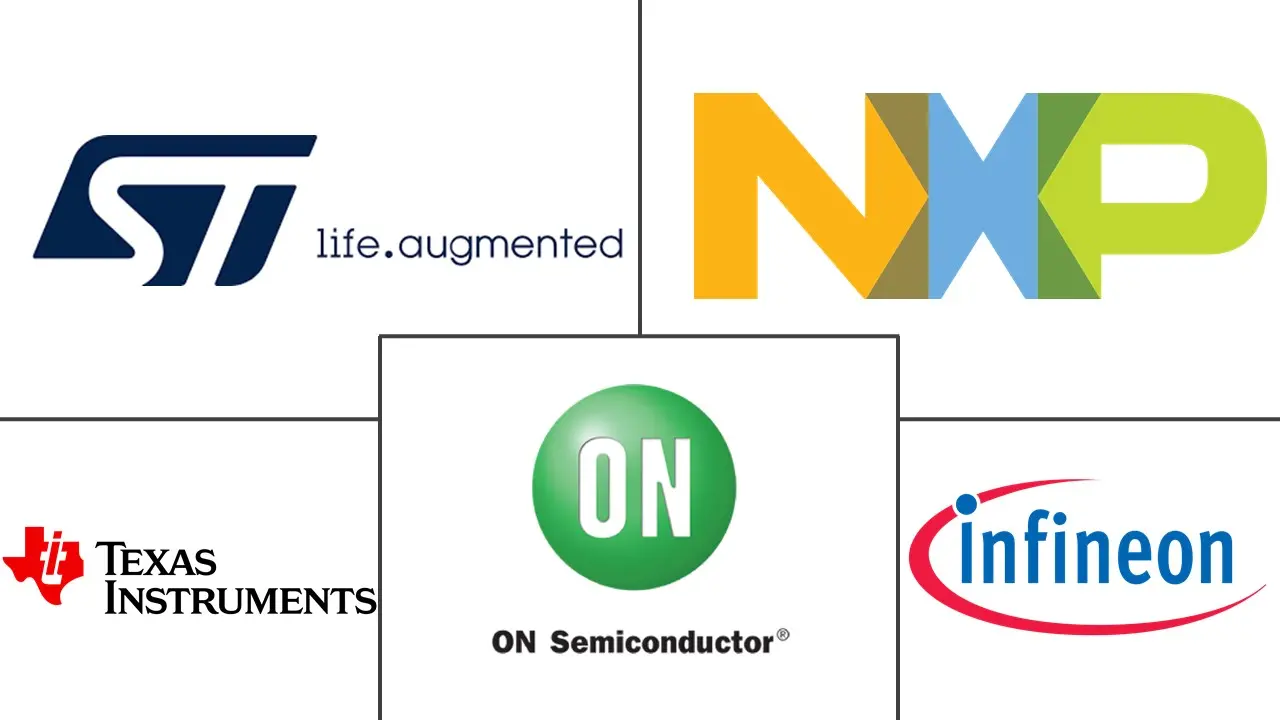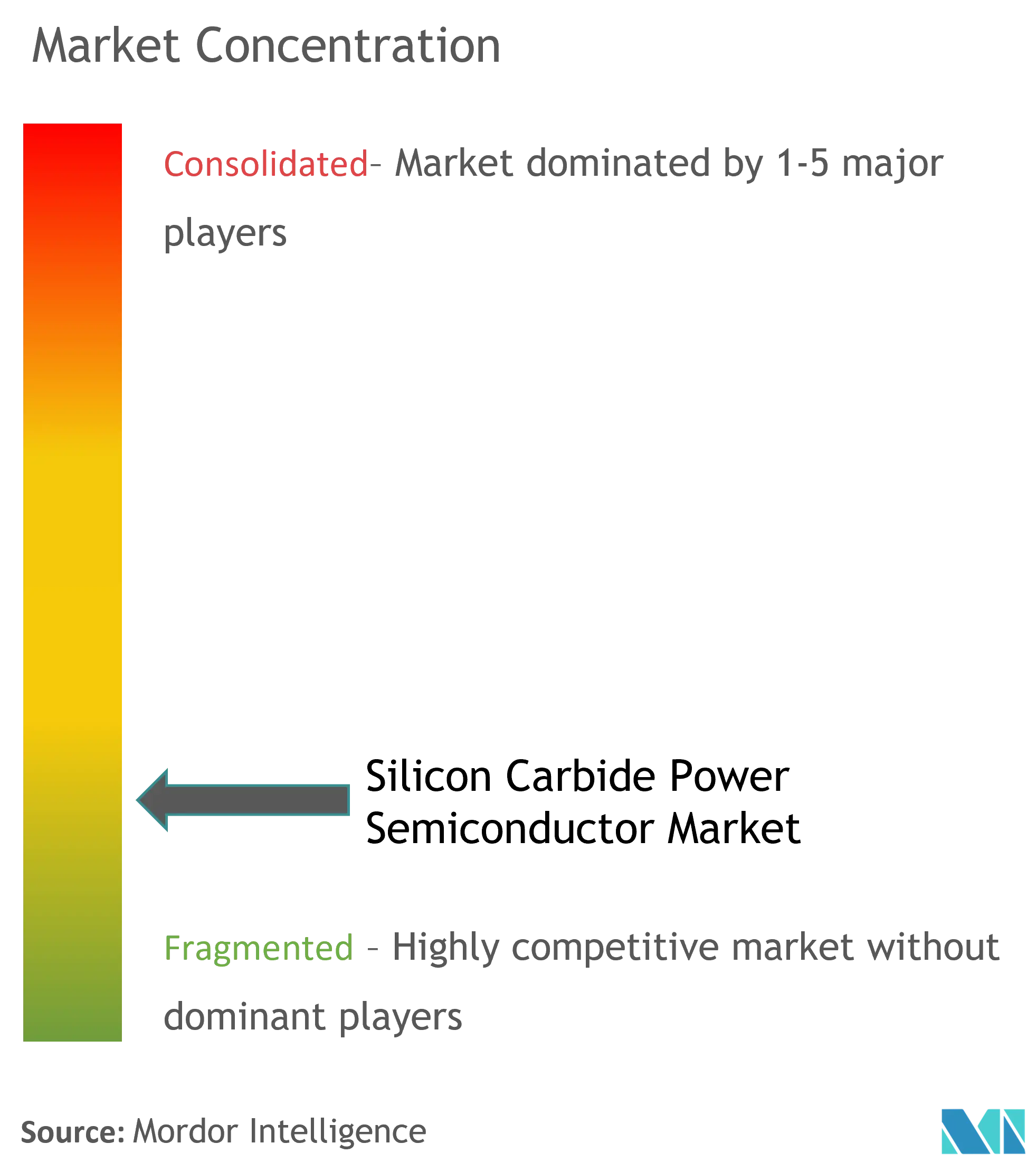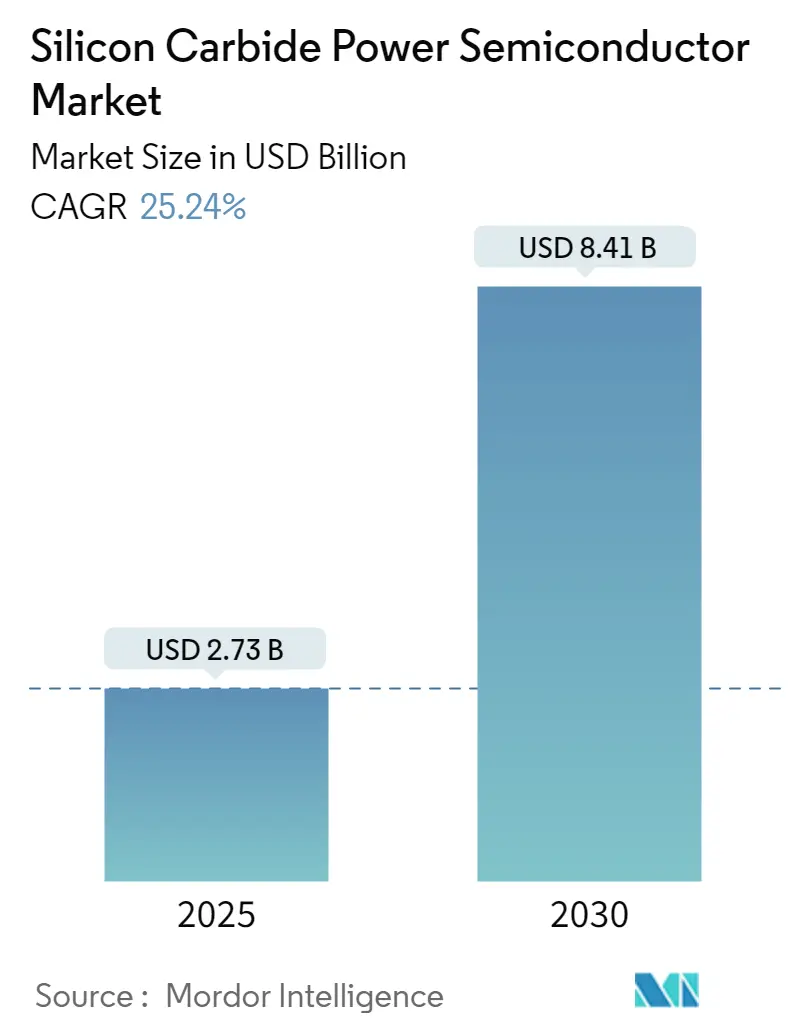
Silicon Carbide Power Semiconductor Market Analysis
The Silicon Carbide Power Semiconductor Market size is estimated at USD 2.73 billion in 2025, and is expected to reach USD 8.41 billion by 2030, at a CAGR of 25.24% during the forecast period (2025-2030).
The pandemic outbreak created economic turmoil for small, medium, and large-scale industries worldwide. Adding to the woes, the country-wide lockdown inflicted by the governments across the globe (to minimize the spread of the virus) further resulted in industries taking a hit and disruption in supply chain and manufacturing operations across the world, as a large part of manufacturing includes the work on the factory floor, where people are in close contact as they collaborate to boost the productivity.
- SiC (Silicon Carbide) is used for high-power applications due to the wide bandgap offered. While various polytypes (polymorphs) of SiC exist, 4H-SiC is the most ideal for power devices. The increase in R&D activities that target enhanced material capabilities is expected to provide a strong impetus for market growth. For instance, the United States Department of Energy's (DOE) Advanced Research Projects AgencyEnergy (ARPA-E) has announced a funding of USD 30 million for 21 projects as part of the Creating Innovative and Reliable Circuits Using Inventive Topologies and Semiconductors (CIRCUITS) program. Also, initiatives such as investment by US DOE for NREL-Led research with an intent to reduce SiC power electronics manufacturing costs could further support such trends and expand the scope of more robust SiC-based devices.
- Electric vehicles provide certain advantages within the automotive industry, such as increased range, charge-time, and performance, to meet customer expectations. However, they require power electronic devices capable of efficient and effective operation at elevated temperatures. Hence, power modules are being developed using wide-bandgap SiC technologies.
- Electric cars are becoming common on the road nowadays with prices coming down and range going up. As per the International Energy Agency's report Global EV Outlook 2021, over 10.2 million light-duty electric passenger cars were on the roads in 2020. In addition, electric car registration increased by 41% in 2020, which creates growth opportunities for the market.
- Semiconductors also use SiC for reduced energy loss and longer life solar and wind energy power converters. For instance, photovoltaic energy mainly requires high power, low loss, faster switching, and reliable semiconductor devices to increase efficiency, power density, and reliability. Thus, SiC devices provide a promising solution to photovoltaic energy requirements to meet the increasing energy demand.
- To tap the potential brought by the demand for cleantech, several players are entering the market for SiC power semiconductors. For instance, in April 2021, NoMIS Power Group, a spin-off from the State University of New York Polytechnic Institute (SUNY Poly), announced that it plans to design, manufacture and sell SiC power semiconductor devices, modules, and services for providing support to power management product developers.
- Moreover, parasitic capacitance and inductance become too great as soon as high frequencies are used, preventing the SiC-based power device from realizing its full potential. In such a regard, widespread usage of SiC may require updates to manufacturing facilities, something which cannot be achieved at the current pace of development.
Silicon Carbide Power Semiconductor Market Trends
Automotive Industry is Expected to Register Significant Growth
- Research activities are being conducted into the usage of silicon carbide (SiC) devices within automotive powertrains. However, due to recent advancements, it is gradually becoming a feasible solution. For instance, Tesla, which uses a rapid charging solution, is already using SiC within their vehicle architectures currently. In addition, electric cars are becoming common on the road nowadays with prices coming down and range going up. According to the International Energy Agency, plug-in electric light vehicle sales across the globe reached around 6.6 million in 2021.
- SiC semiconductors are ideal for applications, such as onboard chargers and inverters, being used within the plug-in hybrid (PHEV) and fully electric vehicles (EVs). This is because their energy efficiency is significantly higher compared to traditional silicon.
- Also, to ensure that EVs can operate over long distances and charge within a reasonable timeframe, the vehicle's power electronics must be capable of handling high temperatures. SiC semiconductors benefit from more than 95% energy efficiency. Only 5% of energy is lost as heat during power conversion, such as recharging the vehicle with a high-power rapid-charger.
- In Japan, the University of Tokyo has been working with Mitsubishi Electric Corporation to enhance the reliability of SiC semiconductor devices. Earlier, Mitsubishi Electric revealed a new ultra-compact SiC inverter designed for hybrid vehicles, with mass commercialization targeted around 2021.
- Moreover, Delphi Technologies and Cree have partnered to create the former's inverters, combined with Cree's SiC MOSFETs. It has significantly reduced the power module's overall temperature while enabling higher power outputs to support an extended range for hybrid and fully electric automobiles. These inverters are also 40% lighter and 30% more compact than competing models.
- Further, in May 2021, Infineon Technologies launched a new power module with CoolSiC MOSFET technology for automotive applications. The use of SiC instead of Si ensures higher efficiency in converters in electric vehicles. For example, Hyundai Motor Group reported that it was able to increase the range of its vehicles by more than 5% because of efficiency gains resulting from the lower losses of this SiC solution compared to the Si-based solution, with the help of the traction inverters based on Infineon's CoolSiC power module.
- Moreover, in March 2021, as part of the Industrial Strategy Challenge Fund led by the UK Research and Innovation, the UK government awarded GBP 4.8 million to Swansea University to manufacture silicon carbide (SiC) power semiconductor devices and create more efficient power electronics for transportation, homes, and industry, and help the nation achieve its net-zero ambitions.
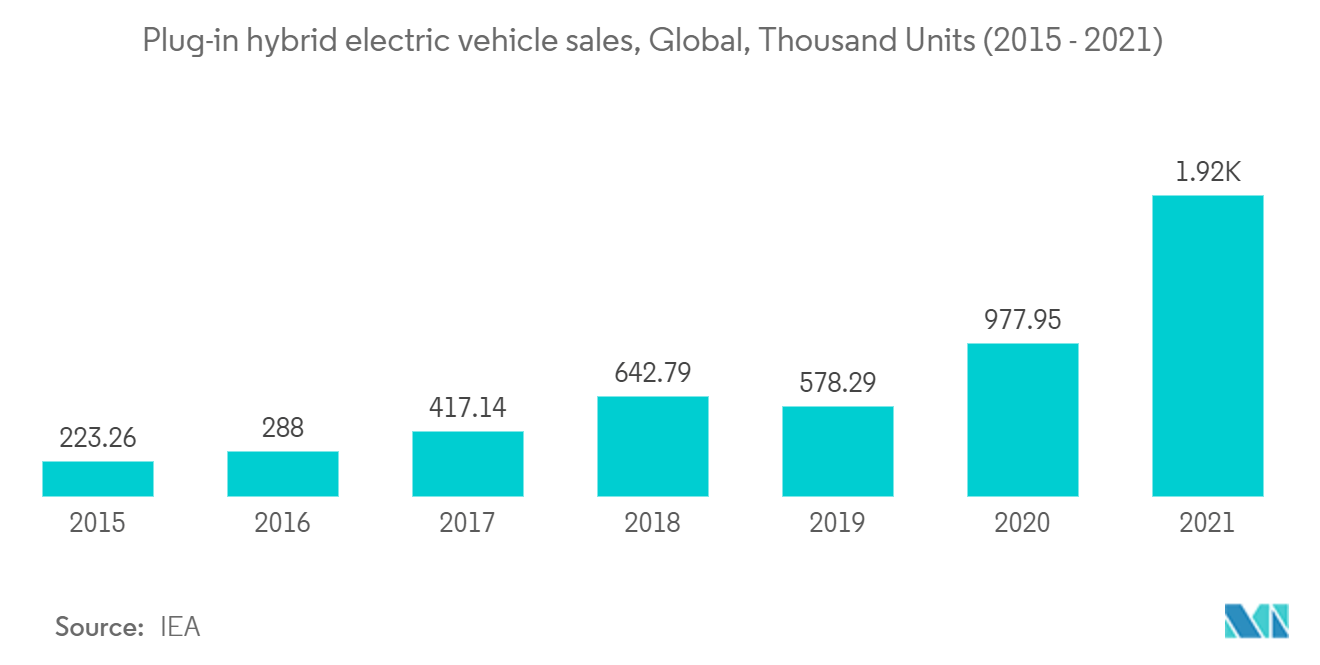
Asia Pacific to Witness the Fastest Growth
- The Asia Pacific dominates the global SiC power semiconductor market, pertaining to global semiconductor market growth, which is also supported by government policies. Furthermore, the region's semiconductor industry is driven by China, Taiwan, Japan, and South Korea, which together account for around 65% of the global discrete semiconductor market. In contrast, others like Thailand, Vietnam, Singapore, and Malaysia also contribute significantly to the region's dominance in the market.
- According to the Indian Electronics and Semiconductor Association, India's semiconductor component market is expected to be worth USD 32.35 billion by 2025, displaying a CAGR of 10.1% (2018-2025). The country is a lucrative destination for worldwide R&D centers. Therefore, the government's ongoing Make In India initiative is expected to result in investments in the semiconductor market.
- Moreover, the region is an electronics hub that produces millions of electronic devices every year for exporting to other countries and consumption in the area. This high production of electronic components and devices largely contributes to the market share of the studied market. For instance, the increasing demand for consumer electronics in India has also facilitated the regional market's growth. According to IBEF, demand for electronics hardware in India is expected to reach USD 400 billion by FY2024, which will further drive market growth.
- China is the world's largest producer of electricity. The country's energy demand is expected to increase, thereby resulting in growth in energy production. For instance, according to the IEA, in China, sales of electric vehicles have more than doubled; further, in 2021, it sold approximately 3.3 million more electric cars than in other countries.
- The automotive industry has been increasing in China, and the country is playing an increasingly important role in the global automotive market. The Government of China sees its automotive industry, including the auto parts sector, as one of its pillar industries. The government expects China's automobile output to reach 30 million units by 2020 and 35 million units by 2025.
- Further, the electric vehicle market is gaining momentum in India, owing to the government's ambitious plans and initiatives. Public authorities in India have made several electric vehicle-related policy announcements over the past few years, showing strong commitment, concrete action, and significant ambition to deploy electric vehicles in the country.
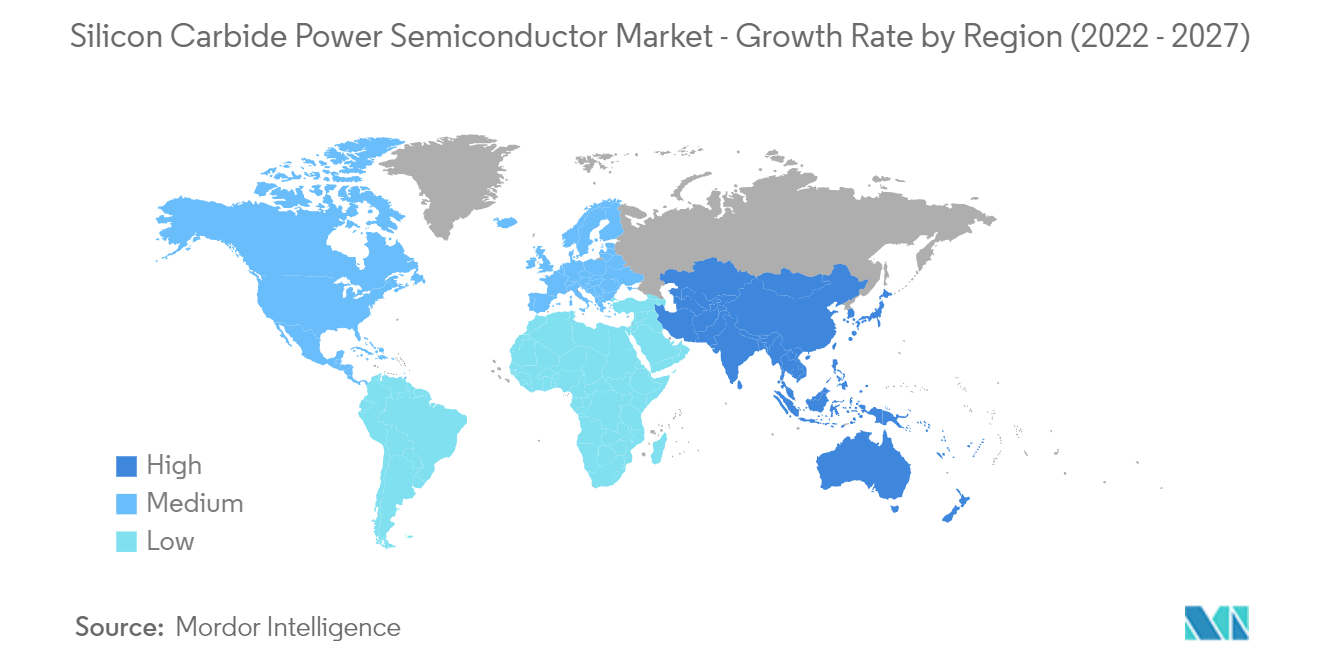
Silicon Carbide Power Semiconductor Industry Overview
The silicon carbide power semiconductor market is highly competitive. It consists of several significant players, including Infineon Technologies AG, Texas Instruments Inc., ST Microelectronics NV, Hitachi Power Semiconductor Device Ltd, NXP Semiconductor, Fuji Electric Co. Ltd, Semikron International GmbH, Cree Inc., ON Semiconductor Corporation, Mitsubishi Electric Corporation, and others. These companies are introducing new products, partnerships, and acquisitions, to increase their market share.
- June 2021 - Hitachi, a Japanese electronics company, announced plans to extend its existing presence in Hillsboro by building a big semiconductor research lab to cooperate with manufacturing clients in the United States to create new technologies.
- April 2021 - Infineon Technologies AG launched a new EasyPACK 2B module to its 1200 V product line. The module offers a three-level Active NPC (ANPC) topology, including CoolSiC MOSFETs, TRENCHSTOP IGBT7 devices, NTC temperature sensor, and PressFIT contact technology pins.
Silicon Carbide Power Semiconductor Market Leaders
-
Infineon technologies AG
-
Texas instruments Inc.
-
STMicroelectronics NV
-
NXP semiconductor
-
ON Semiconductor Corporation
- *Disclaimer: Major Players sorted in no particular order
Silicon Carbide Power Semiconductor Market News
- July 2022 - SemiQ announced the launch of its 2nd Generation Silicon Carbide power switch, a 1200V 80mΩ SiCMOSFET, expanding its portfolio of SiCpower devices. The new MOSFET complements the company's existing SiCrectifiers at 650V, 1200V, and 1700V, which bring high efficiency to high-performance applications like electric vehicles.
- May 2022 - STMicroelectronics revealed its partnership with Semikron for supplying silicon carbide (SiC) technology for the eMPackelectric-vehicle (EV) power modules provided by the company.
- May 2022 - Microchip launched the SiC-based Fully Integrated Precise Time Scale System for smart transportation infrastructure. The Precise Time Scale System (PTSS) is a fully integrated system capable of providing timing accuracies comparable to the world's best national laboratories.
- April 2021 - ON Semiconductor of Phoenix, Arizona, has introduced new automotive (AECQ101) and industrial-grade next-generation 1200V silicon carbide (SiC) diodes, which are suitable for high-power applications such as EV charging stations and solar inverters, uninterruptible power supplies (UPS), EV on-board chargers (OBC), and EV DC-DC converters.
- February 2021 - ON Semiconductor, one of the pioneers in energy-efficient innovations, has introduced a new line of 650 V silicon carbide (SiC) MOSFET devices for demanding applications requiring high power density, efficiency, and reliability. Designers will achieve significantly better performance in applications such as electric vehicles (EV) on-board chargers (OBC), solar inverters, server power supply units (PSU), telecoms, and uninterruptible power supplies (UPS) by replacing existing silicon switching technologies with the new SiC devices (UPS).
Silicon Carbide Power Semiconductor Industry Segmentation
The market study categorizes the market by providing details about the applications of SiC in various end-user industries, such as automotive, consumer electronics, IT and telecommunications, power, industrial, military, and aerospace. The market study also briefly explains its opportunities and challenges in several geographical regions. It also provides an assessment of the impact of COVID-19 on the market.
| By End-user Industry | Automotive (xEVs and EV Charging Infrastructure) |
| IT and Telecommunication | |
| Power (Power Supply, UPS, PV, Wind etc.) | |
| Industrial (Motor drives) | |
| Other End-user Industries (Rail, Oil & Gas, Military, Medical, R&D etc.) | |
| By Geography | Americas |
| Europe, Middle East and Africa | |
| Asia Pacific |
Silicon Carbide Power Semiconductor Market Research FAQs
How big is the Silicon Carbide Power Semiconductor Market?
The Silicon Carbide Power Semiconductor Market size is expected to reach USD 2.73 billion in 2025 and grow at a CAGR of 25.24% to reach USD 8.41 billion by 2030.
What is the current Silicon Carbide Power Semiconductor Market size?
In 2025, the Silicon Carbide Power Semiconductor Market size is expected to reach USD 2.73 billion.
Who are the key players in Silicon Carbide Power Semiconductor Market?
Infineon technologies AG, Texas instruments Inc., STMicroelectronics NV, NXP semiconductor and ON Semiconductor Corporation are the major companies operating in the Silicon Carbide Power Semiconductor Market.
Which is the fastest growing region in Silicon Carbide Power Semiconductor Market?
Asia Pacific is estimated to grow at the highest CAGR over the forecast period (2025-2030).
Which region has the biggest share in Silicon Carbide Power Semiconductor Market?
In 2025, the Asia Pacific accounts for the largest market share in Silicon Carbide Power Semiconductor Market.
What years does this Silicon Carbide Power Semiconductor Market cover, and what was the market size in 2024?
In 2024, the Silicon Carbide Power Semiconductor Market size was estimated at USD 2.04 billion. The report covers the Silicon Carbide Power Semiconductor Market historical market size for years: 2019, 2020, 2021, 2022, 2023 and 2024. The report also forecasts the Silicon Carbide Power Semiconductor Market size for years: 2025, 2026, 2027, 2028, 2029 and 2030.
Our Best Selling Reports
Silicon Carbide Power Semiconductor Industry Report
Statistics for the 2025 Silicon Carbide Power Semiconductor market share, size and revenue growth rate, created by Mordor Intelligence™ Industry Reports. Silicon Carbide Power Semiconductor analysis includes a market forecast outlook for 2025 to 2030 and historical overview. Get a sample of this industry analysis as a free report PDF download.

